Seven Decades of Archaeology
The study of the ancient past at the Dickson Site began in 1927 when Dr. Don F. Dickson conducted excavations on the family farm. His work attracted the attention of the public and scholars. University of Chicago archaeologists who excavated in the area in the 1930s established many of the methods and field techniques of modern archaeology. Over the years Dickson Mounds has been a center for the study and interpretation of the prehistory of the Illinois River Valley, one of the richest archaeological regions in the country.
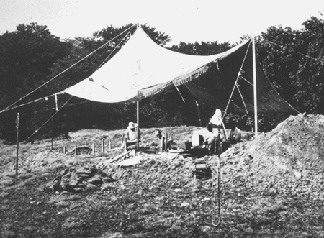
University of Chicago crew at the nearby Morton Site, 1930.
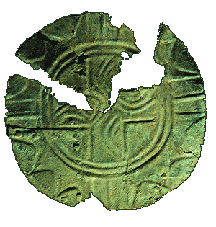
West-central Illinois is rich in archaeological sites. There are a number of important sites on the museum grounds or nearby.
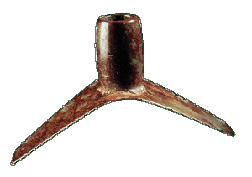
|
Dickson Mounds For
parts of four centuries, inhabitants of the area buried their dead in
the cemetery today called Dickson Mounds. The complex of two cemeteries
and ten mounds with overlapping boundaries surrounded a low mound that
probably supported a building used in burial ceremonies 900 years ago.
Although much of the mound area remains unexcavated, the low mounds
merge with the hillslopes and are hardly recognizable today as being
'man-made.' An unexcavated area of the mounds can be seen outside the
window in the southeast corner of the first floor Resource Center.
|
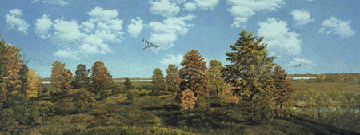 |
|
| Myer-Dickson
Site
1500 years ago Late Woodland peoples occupied the blufftop near where the museum stands today. About 800 years ago, American Indians of the Mississippian culture lived in a large village located on the high, flat areas north of the museum building. This extensive village included an open plaza and an 80-foot-long ceremonial structure in the area of the main parking lot. The village also occupied the hilltop where the picnic grounds are today. Some of the Dickson Burial Mounds were associated with this village |
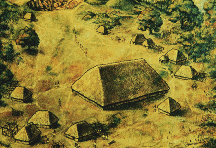 |
|
| Eveland
Village Site
The remains of three excavated ceremonial Mississippian buildings are preserved at the Eveland Village Site on the museum grounds, and may be viewed by the public in the warmer months. The structures are a round building, a cross-shaped building, and a large rectangular building. The site may have been the primary ceremonial center for other small Mississippian sites in the area around AD 1100. |
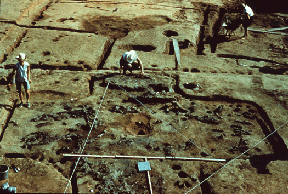 |
|
|
The Ogden-Fettie Site The Ogden-Fettie Site, on the southernmost part of the museum grounds had more than 30 mounds, a village, and was partially enclosed by an extensive ditch. It was occupied at about AD 100 by Middle Woodland peoples, and is one of six major centers of the Midwestern Havana Hopewell Culture within twelve miles of the museum. |
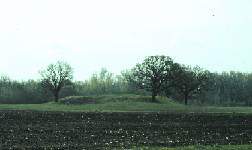 |
|
|
The Larson Site This site, visible from the museum's observation deck, on a blufftop above the confluence of the Illinois and Spoon Rivers, was once a stockaded Mississippian temple town that served as the regional center for numerous smaller settlements scattered along the valley in AD 1250. |
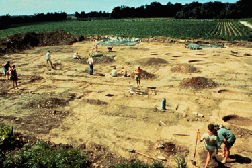 |
|
|
The Rockwell Mound One of the largest mounds ever built in this area, this mound, dating to about AD 200, covers nearly two acres and stands today fourteen feet high. Today a park, it is located about six miles from Dickson Mounds Museum, near the Illinois River in the town of Havana. |
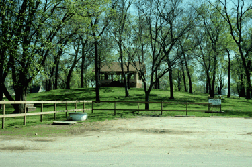 |
|